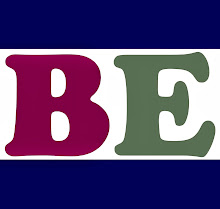What Happens Next (6) - Four Wings
Daniel’s third beast was leopard with four heads and four wings. After that, I looked, and there before me was another beast, one that looked like a leopard. And on its back it had four wings like those of a bird. This beast had four heads, and it was given authority to rule (Dan 7:6).
The leopard is an animal known for its agility and intelligence. It lies in wait near a town to tear to pieces anyone who ventures out (Jer 5:6; Hos 13:7). It is also very swift (Hab 1:8). The two pairs of wings are also an indication of swiftness and speed. This beast has four heads and it is given authority to rule. The number four represents the earth. A head stands for authority, so the four heads mean that this beast has authority throughout the earth. This suggests that the beast is not a nation, but a worldwide movement. The leopard is found in India, Asia and Africa, indicating that this movement will be based in the developing world.
When I first wrote about this leopard in the 1980s, I thought that this foretold the development of international terrorism. This is partly true, but it misses the point, because focussing on terrorism just produces fear. The leopard represents more than mindless terrorism.
The key to understanding the leopard is the word “four”. The four-headed leopard (4WL) represents groups using “fourth generation warfare”.
The doctrine of Fourth Generation Warfare (4GW) was first defined in 1989 by William L Lind and a team of American Marine Corp analysts. I am not stupid enough to think that Daniel was thinking about 4GW, but I do believe that when Walter Lind was working with his mates to describe this new phenomenon, the Holy Spirit popped the number four into their minds, as a clue for alert readers of Daniel.
4GW describes a return to a decentralized form war in which the state has lost its monopoly over combat forces. One of the major participants is not a state, but an ideological network that employs tactics that weaken a powerful state.
Prior to the Peace of Westphalia in 1648, wars were fought by families, tribes, religions, cities and business enterprises, not just with armies, but also with navies, Westphalia gave the state a monopoly over war. The first generation of state-controlled war used line and column tactics, where battles were formal and the battlefield was orderly. This created a military culture of order.
The second generation began in the middle of the 19th century when rifled muskets, breech loaders and machine guns made the old line and column tactics suicidal. The solution was mass firepower, most artillery fire. Order was restored by placing infantry in trenches and using centrally-controlled artillery according specific plans and orders. Obedience was more important than initiative and discipline was imposed from the top.
Third Generation warfare was developed by the German Army and is commonly known as Blitzkrieg or manoeuver warfare. The emphasis is on mobile firepower, speed and surprise. The aim is to get behind the enemy’s lines and destroying them from the rear.
The fourth generation marks a radical change in the nature of warfare, because the state loses its monopy over warfare. 4GW undermines the authority of human governments, by exposing their weakness.


No comments:
Post a Comment